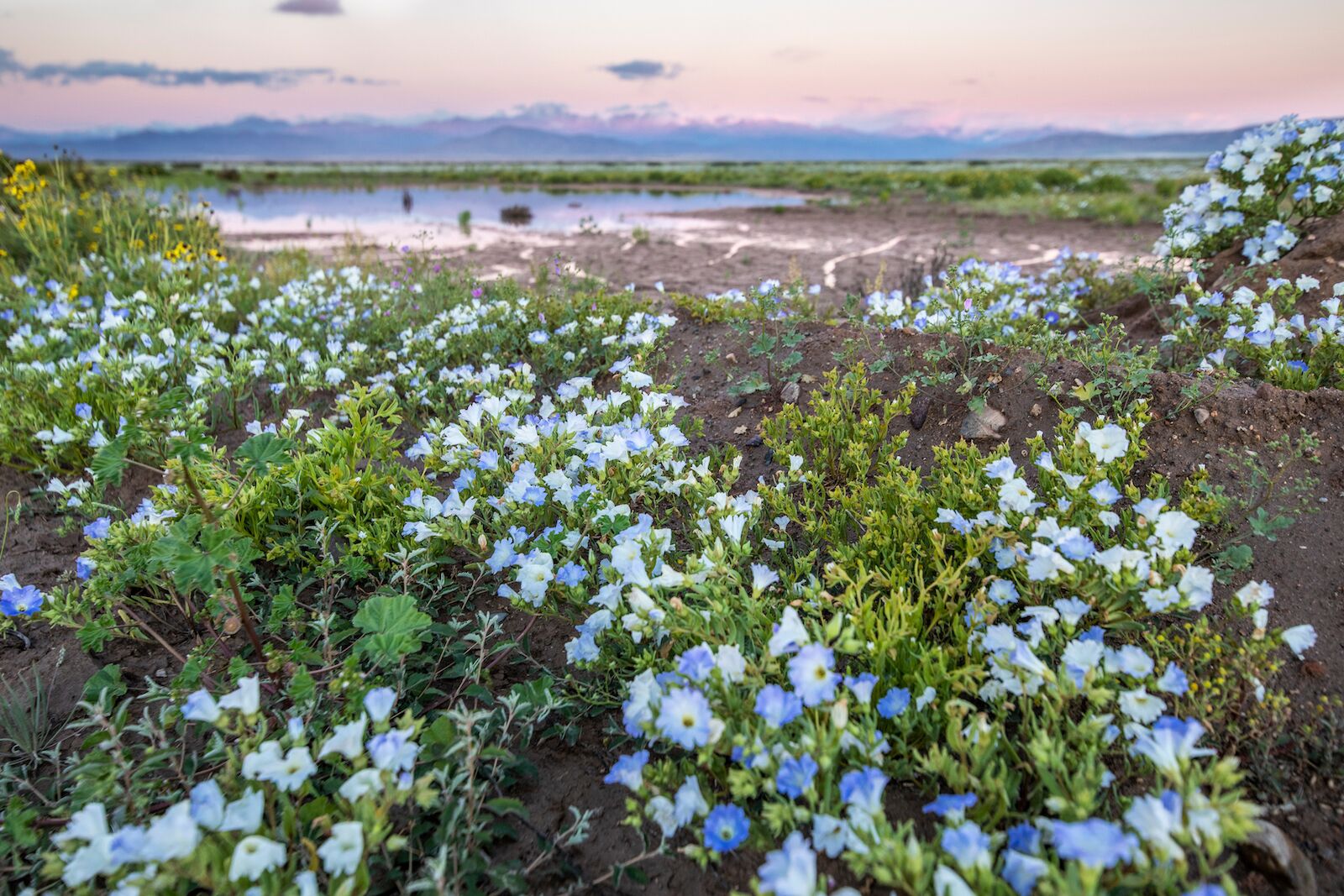As the driest place on earth, you might expect the Atacama Desert to be a barren affair. Yet, every couple of years, a tiny section of Chile’s far north coastal desert erupts with the desierto florido, or desert bloom. This springtime phenomenon paints the dunes of this coastal region with a myriad of colors from cerise pink to snowdrop white.
Chile’s botanical spectacle takes place in the Coquimbo region with the Llanos de Challe National Park at the heart of the magic. Due to the unique climate of Llanos de Challe and its usual parched status, this floral sensation is rare and never guaranteed.
While the Atacama Desert – known for its volcanoes, geysers, and hot springs – stretches across 40,440 square miles, the humble Llanos de Challe claims less than one percent of that land. Coined the “Little North” of the country’s “Big North,” the reserve is a 10-hour drive south of San Pedro de Atacama.



